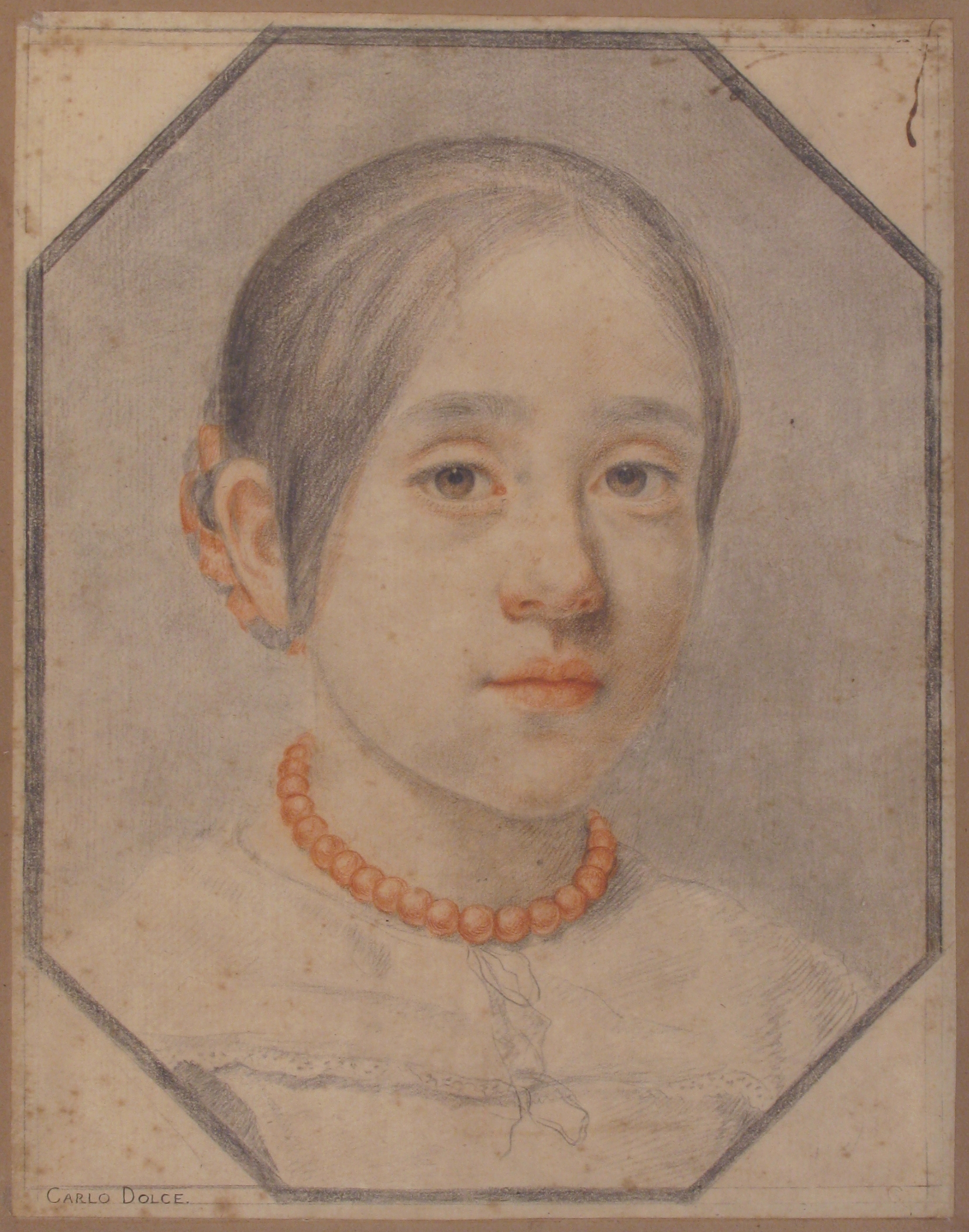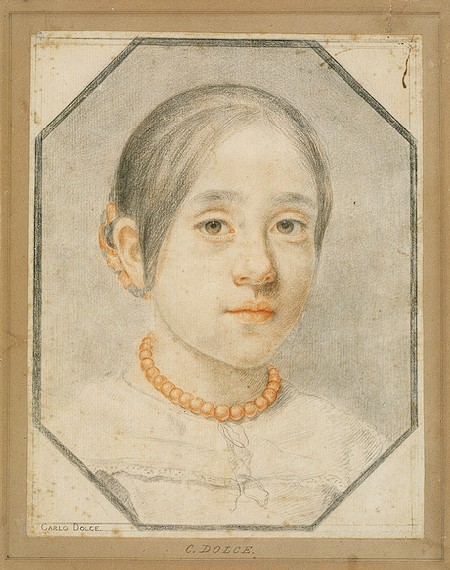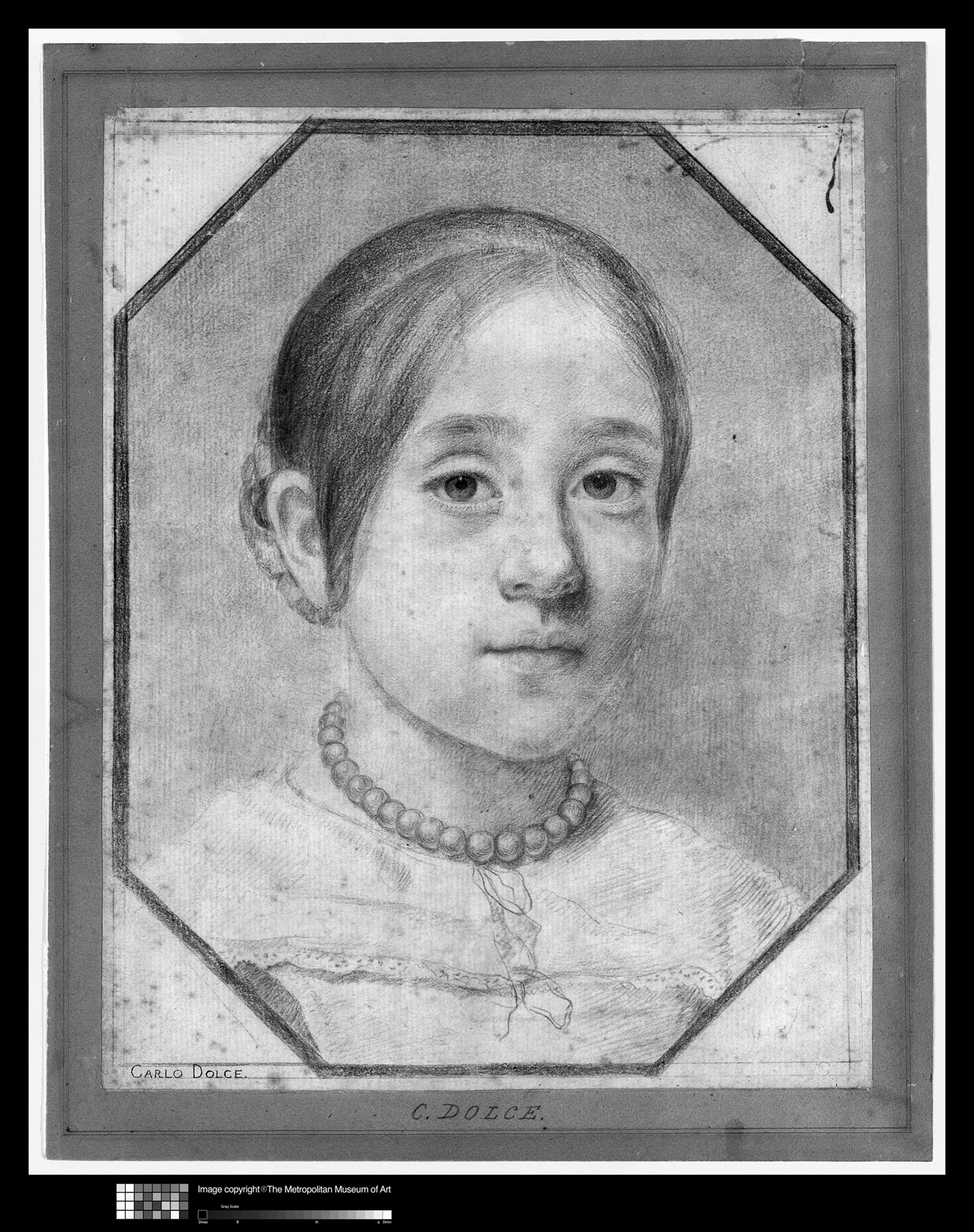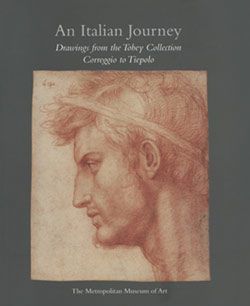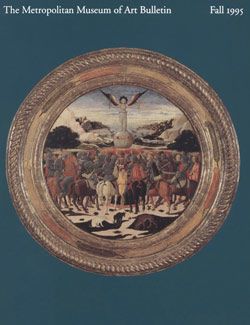Portrait of the Artist's Daughter Agata Dolci
Carlo Dolci Italian
Not on view
Early Baroque draftsmen refined red-and-black chalk drawing to achieve exquisite, naturalistic, and chromatic effects in portraits and figure studies: the Florentine painter and draftsman Carlo Dolci was an extraordinary practitioner of this technique. The combined use of red and black chalk was perfected by Florentine seventeenth-century artists and frequently employed in Italy and France in the next century by artists such as François Boucher (1703-1770), who may well have owned this drawing. Dolci described an octagon around the portrait, suggesting that the drawing may have been preparatory for a painting in that shape.The drawing in the Metropolitan Museum of Art appears to date from the last years of the artist's life, when he was housebound and barely painting after repeated bouts of melancholia. Agata was the youngest of Dolci's seven daughters, and may have been an artist like her better-known elder sister, Agnese Dolci (d. in 1689).
The date of this exquisite portrait can be established by several clues. Agata was still recorded as a young girl ("fanciulla piccola") in her father's will of May 23, 1685 (Archivio di Stato, Florence, Notarile, no. 20596, fol. 3302/37), and she was previously portrayed by Dolci at the age of four on a drawing now in Cambridge datable between 1667-70 (Fitzwilliam Museum inv. 904*3, fol. 4r, inscribed "Agata di Anni 4"). On the Metropolitan Museum drawing the girl appears to be older, approximately ten years old, thus suggesting a date of execution around 1676-80. Agata is here formally dressed, and wears a coral necklace, an apotropaic symbol. According to David Scrase (Italian Drawings at the Fitzwilliam Museum, Cambridge 2011, p. 222) a further portrait of Agata can be recognized in the young girl drawn by Dolci on the sheet now in Los Angeles (The J. Paul Getty Museum, inv. 83.GB.374).
(Furio Rinaldi, 2014)
Due to rights restrictions, this image cannot be enlarged, viewed at full screen, or downloaded.
This artwork is meant to be viewed from right to left. Scroll left to view more.


